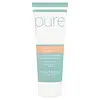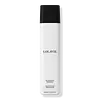What's inside
What's inside
 Key Ingredients
Key Ingredients

 Benefits
Benefits

 Concerns
Concerns

 Ingredients Side-by-side
Ingredients Side-by-side

Water
Skin ConditioningCocamidopropyl Betaine
CleansingSodium Lauroyl Sarcosinate
CleansingGlycerin
HumectantCitric Acid
BufferingBetaine
HumectantSodium Benzoate
MaskingPotassium Sorbate
PreservativeAllantoin
Skin ConditioningGuar Hydroxypropyltrimonium Chloride
Skin ConditioningSodium Chloride
MaskingTocopherol
AntioxidantHelianthus Annuus Seed Oil
EmollientAloe Barbadensis Leaf Juice
Skin ConditioningLactobacillus/Arundinaria Gigantea Ferment Filtrate
Skin ConditioningSodium Lauroyl Methyl Isethionate
CleansingLactobacillus Ferment
Skin ConditioningCocamidopropyl Betaine
CleansingGlycerin
HumectantSodium Cocoyl Isethionate
CleansingSodium Lauroyl Sarcosinate
CleansingSalvia Hispanica Seed Extract
EmollientCitric Acid
BufferingGlycosphingolipids
EmollientPisum Sativum Peptide
Skin ConditioningCitrus Limon Fruit Extract
MaskingMentha Piperita Leaf Extract
Skin ConditioningSaccharum Officinarum Extract
MoisturisingZingiber Officinale Root Extract
MaskingNiacinamide
SmoothingPanthenol
Skin ConditioningSaccharomyces/Copper Ferment
Skin ConditioningSaccharomyces/Iron Ferment
Skin ConditioningSaccharomyces/Magnesium Ferment
Saccharomyces/Zinc Ferment
Skin ConditioningPyrus Malus Fruit Extract
Skin ConditioningBiotin
AntiseborrhoeicCaffeine
Skin ConditioningMelatonin
AntioxidantCamellia Sinensis Leaf Extract
AntimicrobialHexapeptide-11
Skin ConditioningPolyquaternium-10
Betaine
HumectantParfum
MaskingLinalool
PerfumingLimonene
PerfumingLactobacillus/Arundinaria Gigantea Ferment Filtrate, Sodium Lauroyl Methyl Isethionate, Lactobacillus Ferment, Cocamidopropyl Betaine, Glycerin, Sodium Cocoyl Isethionate, Sodium Lauroyl Sarcosinate, Salvia Hispanica Seed Extract, Citric Acid, Glycosphingolipids, Pisum Sativum Peptide, Citrus Limon Fruit Extract, Mentha Piperita Leaf Extract, Saccharum Officinarum Extract, Zingiber Officinale Root Extract, Niacinamide, Panthenol, Saccharomyces/Copper Ferment, Saccharomyces/Iron Ferment, Saccharomyces/Magnesium Ferment, Saccharomyces/Zinc Ferment, Pyrus Malus Fruit Extract, Biotin, Caffeine, Melatonin, Camellia Sinensis Leaf Extract, Hexapeptide-11, Polyquaternium-10, Betaine, Parfum, Linalool, Limonene
Ingredients Explained
These ingredients are found in both products.
Ingredients higher up in an ingredient list are typically present in a larger amount.
Betaine is a common humectant (a substance that promotes retention of moisture). It's known to be gentle on the skin and can help balance hydration.
This ingredient is best for improving hydration and soothing irritated skin. Studies also show it helps even out skin tone.
Fun fact: Betaine is naturally created in the skin and body. The kind found within cosmetic products can be either plant-derived or synthetic.
Another name for betaine is trimethylglycine.
Learn more about BetaineCitric Acid is an alpha hydroxy acid (AHA) naturally found in citrus fruits like oranges, lemons, and limes.
Like other AHAs, citric acid can exfoliate skin by breaking down the bonds that hold dead skin cells together. This helps reveal smoother and brighter skin underneath.
However, this exfoliating effect only happens at high concentrations (20%) which can be hard to find in cosmetic products.
Due to this, citric acid is usually included in small amounts as a pH adjuster. This helps keep products slightly more acidic and compatible with skin's natural pH.
In skincare formulas, citric acid can:
While it can provide some skin benefits, research shows lactic acid and glycolic acid are generally more effective and less irritating exfoliants.
Most citric acid used in skincare today is made by fermenting sugars (usually from molasses). This synthetic version is identical to the natural citrus form but easier to stabilize and use in formulations.
Read more about some other popular AHA's here:
Learn more about Citric AcidCocamidopropyl Betaine is a fatty acid created by mixing similar compounds in coconut oil and dimethylaminopropylamine, a compound with two amino groups.
This ingredient is a surfactant and cleanser. It helps gather the dirt, pollutants, and other impurities in your skin to be washed away. It also helps thicken a product and make the texture more creamy.
Being created from coconut oil means Cocamidopropyl Betaine is hydrating for the skin.
While Cocamidopropyl Betaine was believed to be an allergen, a study from 2012 disproved this. It found two compounds in unpure Cocamidopropyl Betaine to be the irritants: aminoamide and 3-dimethylaminopropylamine. High-grade and pure Cocamidopropyl Betaine did not induce allergic reactions during this study.
Learn more about Cocamidopropyl BetaineGlycerin is already naturally found in your skin. It helps moisturize and protect your skin.
A study from 2016 found glycerin to be more effective as a humectant than AHAs and hyaluronic acid.
As a humectant, it helps the skin stay hydrated by pulling moisture to your skin. The low molecular weight of glycerin allows it to pull moisture into the deeper layers of your skin.
Hydrated skin improves your skin barrier; Your skin barrier helps protect against irritants and bacteria.
Glycerin has also been found to have antimicrobial and antiviral properties. Due to these properties, glycerin is often used in wound and burn treatments.
In cosmetics, glycerin is usually derived from plants such as soybean or palm. However, it can also be sourced from animals, such as tallow or animal fat.
This ingredient is organic, colorless, odorless, and non-toxic.
Glycerin is the name for this ingredient in American English. British English uses Glycerol/Glycerine.
Learn more about GlycerinSodium Lauroyl Sarcosinate is a cleansing agent and emulsifier. It is a surfactant derived from sarcosine, and a common source is coconut oil.
As a surfactant, Sodium Lauroyl Sarcosinate helps lift dirts, oil, and other molecules to be washed away. In leave-on products, this ingredient is used as an emulsifier. Emulsifier help prevent ingredients such as oils and waters from separating.
Sodium Lauroyl Sarcosinate is also commonly found as a foaming agent in shampoo, toothpaste, and shaving foam. It is amphiphilic, meaning it loves both water and fats.
Learn more about Sodium Lauroyl Sarcosinate